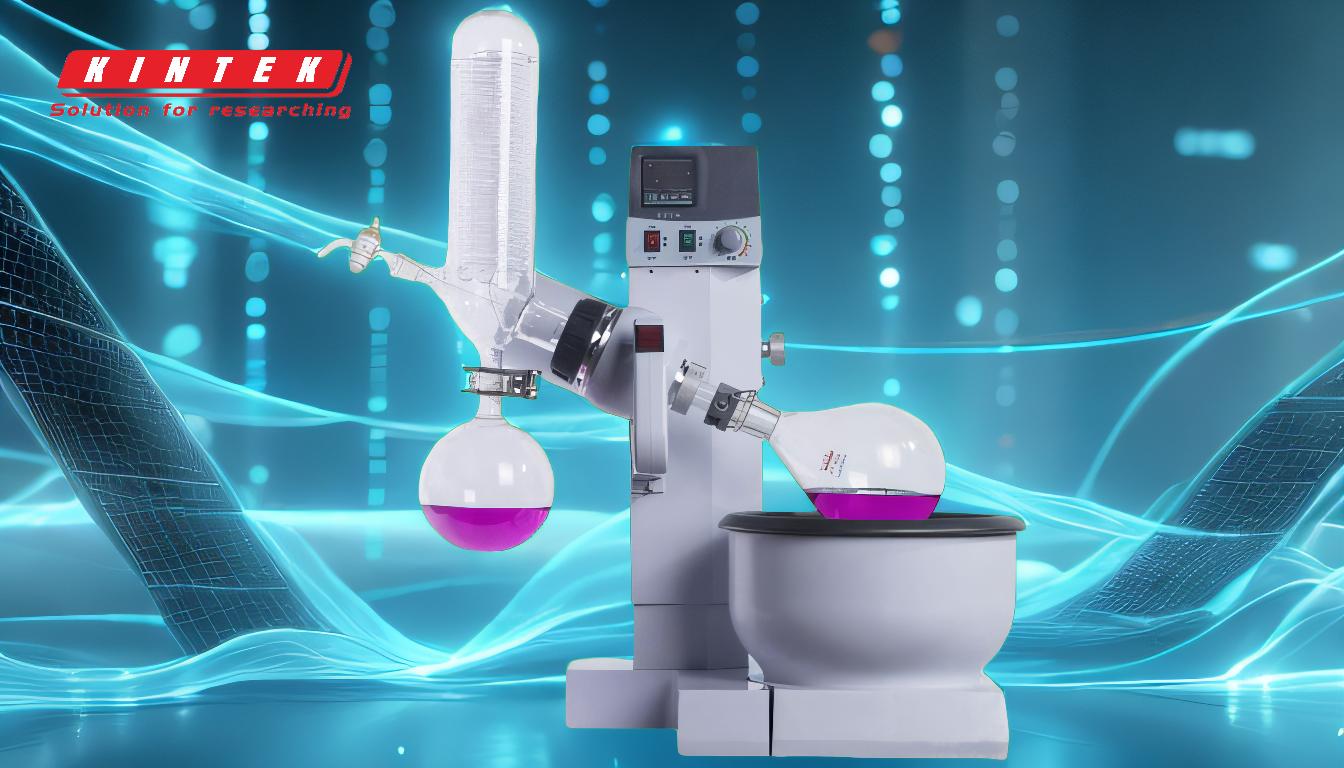A rotary evaporator and simple distillation are both techniques used to separate components of a mixture, but they differ significantly in their mechanisms, efficiency, and applications. Rotary evaporation is a modern, advanced method that operates under reduced pressure, allowing for faster evaporation at lower temperatures, making it ideal for heat-sensitive compounds. It uses rotation to increase the surface area of the solvent, enhancing evaporation rates and reducing the risk of bumping. Simple distillation, on the other hand, is a traditional method that relies on heating a mixture to separate components based on their boiling points, but it is less efficient and less suitable for delicate compounds. Rotary evaporators are electronically controlled, offering precision and ease of use, while simple distillation requires more manual intervention and lacks the advanced features of rotary systems.
Key Points Explained:

-
Operating Principle and Pressure Conditions:
- Rotary Evaporator: Operates under reduced pressure, which lowers the boiling point of solvents. This is particularly useful for heat-sensitive compounds that might degrade at higher temperatures.
- Simple Distillation: Operates at atmospheric pressure, requiring higher temperatures to achieve boiling, which can be detrimental to sensitive materials.
-
Evaporation Rate and Efficiency:
- Rotary Evaporator: The rotation of the flask creates a thin film of solvent, increasing the surface area for evaporation. This, combined with reduced pressure, significantly speeds up the evaporation process.
- Simple Distillation: The evaporation rate is slower because it relies solely on heating the mixture without the benefits of increased surface area or reduced pressure.
-
Temperature Control:
- Rotary Evaporator: Allows for precise control of temperature, vacuum, and rotation speed, ensuring gentle and efficient evaporation. Modern models often come with digital controls for enhanced accuracy.
- Simple Distillation: Temperature control is less precise, and the process is more manual, making it less suitable for delicate or complex separations.
-
Handling of Heat-Sensitive Compounds:
- Rotary Evaporator: Ideal for heat-sensitive compounds due to its ability to evaporate solvents at lower temperatures, minimizing the risk of thermal degradation.
- Simple Distillation: Less suitable for heat-sensitive compounds as it requires higher temperatures, which can lead to decomposition or unwanted chemical reactions.
-
Automation and Ease of Use:
- Rotary Evaporator: Features built-in motors and digital controls, reducing the need for manual intervention and making it user-friendly, even for inexperienced operators.
- Simple Distillation: Requires more manual operations, such as adjusting heat sources and monitoring the process, making it less convenient and more labor-intensive.
-
Suppression of Bumping:
- Rotary Evaporator: The rotation of the flask helps to suppress bumping (sudden, violent boiling), ensuring a smoother and safer evaporation process.
- Simple Distillation: Bumping is a common issue, especially with viscous or high-boiling-point solvents, and requires careful monitoring to prevent spills or accidents.
-
End Product Retention:
- Rotary Evaporator: The residue (concentrated compound) is retained in the original flask, making it easier to collect and analyze.
- Simple Distillation: The distillate (collected solvent) is the primary product, which may require additional steps to isolate or concentrate the desired compound.
-
Application Scope:
- Rotary Evaporator: Widely used in laboratories for solvent removal, concentration of samples, and purification of compounds, especially in organic chemistry and pharmaceutical research.
- Simple Distillation: Typically used for simpler separations, such as purifying water or separating components with distinct boiling points, but is less effective for complex or delicate mixtures.
In summary, while both rotary evaporation and simple distillation are valuable techniques for separating mixtures, rotary evaporation offers significant advantages in terms of speed, efficiency, and suitability for heat-sensitive compounds. Its advanced features, such as reduced pressure operation, automated controls, and enhanced safety, make it a preferred choice in modern laboratories. Simple distillation, though effective for basic separations, lacks the precision and versatility of rotary evaporation, particularly when dealing with complex or delicate samples.
Summary Table:
| Feature | Rotary Evaporator | Simple Distillation |
|---|---|---|
| Pressure | Reduced pressure | Atmospheric pressure |
| Temperature Control | Precise, digital controls | Manual, less precise |
| Evaporation Rate | Faster due to rotation and reduced pressure | Slower, relies on heating |
| Heat-Sensitive Compounds | Ideal for heat-sensitive compounds | Less suitable for heat-sensitive compounds |
| Automation | Automated, user-friendly | Manual, labor-intensive |
| Bumping Suppression | Effective suppression | Common issue, requires monitoring |
| End Product | Concentrated compound in original flask | Distillate (collected solvent) |
| Applications | Solvent removal, sample concentration | Simple separations (e.g., water purification) |
Discover the best separation technique for your lab—contact us today for expert advice!









